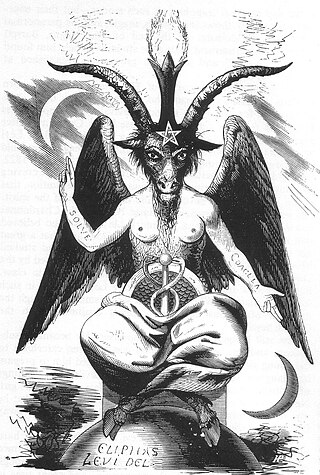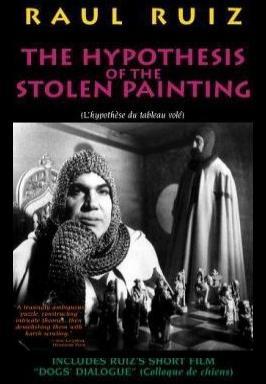Related Research Articles

Bernard of Clairvaux, O.Cist., venerated as Saint Bernard, was an abbot, mystic, co-founder of the Knights Templar, and a major leader in the reform of the Benedictines through the nascent Cistercian Order.
Year 1195 (MCXCV) was a common year starting on Sunday of the Julian calendar.

Philip IV, called Philip the Fair, was King of France from 1285 to 1314. By virtue of his marriage with Joan I of Navarre, he was also King of Navarre and Count of Champagne as Philip I from 1284 to 1305. Although Philip was known to be handsome, hence the epithet le Bel, his rigid, autocratic, imposing, and inflexible personality gained him other nicknames, such as the Iron King. His fierce opponent Bernard Saisset, bishop of Pamiers, said of him: "He is neither man nor beast. He is a statue."

Foucault's Pendulum is a novel by Italian writer and philosopher Umberto Eco. It was first published in 1988, with an English translation by William Weaver being published a year later.

Baphomet is a figure incorporated across various occult and Western esoteric traditions. During trials starting in 1307, the Knights Templar were accused of heresy for worshipping Baphomet as a demonic idol. Baphomet subsequently resurfaced during 19th century debate regarding the suppression of the Templars, with various occult and mystical traditions claiming Baphomet as a symbol of balance and synthesis, originating in teachings of the Gnostics, while others maintained Baphomet as a profane deity. Since 1856 the figure of Baphomet has been associated with the Sabbatic Goat illustration by Éliphas Lévi, composed of binary elements representing the "symbolization of the equilibrium of opposites": both human and animal, both masculine and feminine, combined in metaphysical unity. Lévi's intention was to symbolize his concept of balance, with Baphomet representing the goal of perfect social order.

The Monk: A Romance is a Gothic novel by Matthew Gregory Lewis, published in 1796 across three volumes. Written early in Lewis's career, it was published before he turned twenty, and he withheld his name from the first edition. It tells the story of a virtuous monk who gives into his lustful urges, setting off a chain of events that leave him damned. It is a prime example of the type of Gothic that specializes in horror.
The river Eridanos or Eridanus is, both, the name of a river in Northern Europe mentioned in Greek mythology and historiography, and the name of the god of said-river.

Françoise Sagan was a French playwright, novelist, and screenwriter. Sagan was known for works with strong romantic themes involving wealthy and disillusioned bourgeois characters. Her best-known novel was her first, Bonjour Tristesse (1954), which was written when she was a teenager.
Yukar are Ainu sagas that form a long rich tradition of oral literature. In older periods, the epics were performed by both men and women; during the 19th and early 20th centuries, when Ainu culture was in decline, women were generally the most skillful performers. Traditional tales describe floating worlds with Ainu mosir, or the land of the humans, resting on the back of a fish whose movements cause earthquakes.

Justine, or The Misfortunes of Virtue is a 1791 novel by Donatien Alphonse François de Sade, better known as the Marquis de Sade. Justine is set just before the French Revolution in France and tells the story of a young girl who goes under the name of Thérèse. Her story is recounted to Madame de Lorsagne while defending herself for her crimes, en route to punishment and death. She explains the series of misfortunes that led to her present situation.

Gesualdo Bufalino, was an Italian writer who lived in Sicily for most of his life.
The Aarne–Thompson–Uther Index is a catalogue of folktale types used in folklore studies. The ATU index is the product of a series of revisions and expansions by an international group of scholars: Originally published in German by Finnish folklorist Antti Aarne (1910), the index was translated into English, revised, and expanded by American folklorist Stith Thompson, and later further revised and expanded by German folklorist Hans-Jörg Uther (2004). The ATU index is an essential tool for folklorists, used along with the Thompson (1932)Motif-Index of Folk-Literature.
Piers Paul Read FRSL is a British novelist, historian and biographer. He was first noted in 1974 for a book of reportage, Alive: The Story of the Andes Survivors, later adapted as a feature film and a documentary. Read was educated at St. John's College, Cambridge, where he studied history.
Baldric of Dol was prior and then abbot of Bourgueil from 1077 to 1106, then made bishop of Dol-en-Bretagne in 1107 and archbishop in 1108 until his death. He fulfilled his monastic duties by travelling to attend Church councils and writing of poetry and history, his most influential piece being a historical account of the First Crusade.

Erotic horror, alternately called horror erotica or dark erotica, is a genre of fiction in which sensual or sexual imagery are blended with horrific overtones or story elements for the purpose of sexual titillation. Horror fiction of this type is most common in literature and film.
The Poor Fellow-Soldiers of Christ and the Temple of Jerusalem, or Templars, was a military order founded in c. 1120.
De nugis curialium is the major surviving work of the 12th-century Latin author Walter Map. He was an English courtier of Welsh descent. Map claimed that he was a man of the Welsh Marches ;. He was probably born in Herefordshire, but his studies and employment took him to Canterbury, Paris, Rome and to several royal and noble courts of Western Europe. The book takes the form of a series of anecdotes of people and places, offering many sidelights on the history of his own time. Some are from personal knowledge, and apparently reliable; others represent popular rumours about history and current events, and are often far from the truth.
Pierre Barbet was the main pseudonym used by French science fiction writer and pharmacist Claude Avice. Claude Avice also used the pseudonyms of Olivier Sprigel and David Maine. Several of his novels were translated into English and published by DAW Books.
The original historic Knights Templar were a Christian military order, the Order of the Poor Fellow Soldiers of Christ and of the Temple of Solomon, that existed from the 12th to 14th centuries to provide warriors in the Crusades. These men were famous in the high and late Middle Ages, but the Order was disbanded very suddenly by King Philip IV of France, who took action against the Templars in order to avoid repaying his own financial debts. He accused them of heresy, ordered the arrest of all Templars within his realm, put the Order under trial and many of them burned at the stake. The dramatic and rapid end of the Order led to many stories and legends developing about them over the following centuries. The Order and its members increasingly appear in modern fiction, though most of these references portray the medieval organization inaccurately.

The Hypothesis of the Stolen Painting is a 1978 French surrealist experimental mystery film directed by Chilean filmmaker Raúl Ruiz and shot by cinematographer Sacha Vierny. The film was inspired by the themes of French writer Pierre Klossowski and makes references to many of Klossowski's works including The Revocation of the Edict of Nantes, The Baphomet and “La Judith de Frédérique Tonnerre.” Ruiz was originally commissioned by a French TV network to make an arts documentary on Klossowski, but what emerged is this film, a parody of the art documentary. The film was featured in film festivals after its release such as the London Film Festival in 1979. Hypothesis of the Stolen Painting has been noted as one of Ruiz's masterpieces that challenges the boundaries of cinema and film theory.
References
- ↑ Kelly, Robert (1989). "Review of The Baphomet". Conjunctions (14): 281–283. ISSN 0278-2324. JSTOR 24515064.
- ↑ James, Ian (2005). "Evaluating Klossowski's "Le Baphomet"". Diacritics. 35 (1): 119–135. doi:10.1353/dia.2007.0013. ISSN 0300-7162. JSTOR 4621028.